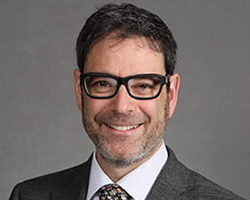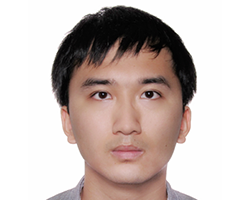Predicting surgical outcomes with machine learning
Interdisciplinary team tackles complexity of clinical data in perioperative care

Hospitals spend about one-third of their expenses on perioperative care – the high-stakes period just before and after a patient is in surgery — to prevent complications afterward. Washington University in St. Louis researchers have developed a machine learning approach that exploits the large amount of clinical data collected during perioperative care to predict potential post-operative complications, which could ultimately improve patient outcome and reduce the cost of care.
Chenyang Lu, the Fullgraf Professor in the McKelvey School of Engineering, and Bing Xue, a doctoral student in Lu’s lab, collaborated with a team of physicians and researchers from Washington University School of Medicine to develop machine learning models that provided superior performance for predicting post-operative complications and surgery duration. They presented their results at the ACM SIGKDD Conference on Knowledge Discovery and Data Mining.
When a patient is prepared for and undergoes surgery, health care providers gather a wealth of information comprising hundreds of variables such as demographics, history of comorbidities, lab tests, medications, clinical notes and physiological signals. While a large number of variables, or high dimensionality of data, provides rich information that can be learned with a machine learning model, the high dimensionality of perioperative data also carries several challenges for the model: The high dimensionality of data may lead to a “brittle” model, which fits the training data well, but suffers deterioration and instability in predictive performance in the real world. In addition, perioperative data have highly variable missing rates across different variables depending on the characteristics of the patient and the specific surgery. Given the critical nature of perioperative model, it is imperative for the model to maintain “robust” predictive performance despite the complexity of perioperative data.
To deal with the complexity of perioperative data, Lu and Xue developed a deep learning approach called clinical variational autoencoder (cVAE) to transform the data to latent representations with lower dimensionality while capturing the hidden nonlinear relationship of the original perioperative variables. Using data sets from hospitals within the BJC HealthCare system in St. Louis they trained two models — one for predicting patients who would develop postoperative delirium, and one for predicting the duration of surgeries. Using their cVAE model, Xue transformed 562 clinical variables into 10 variables that captured essentially the same information. This representation of compressed data, or latent space, can then be used to make robust predictions of surgical outcomes, Lu and Xue said.
“At Washington University, we are integrating state-of-the-art machine learning approaches, sophisticated real-time telemedicine support and human-in-the loop adjudication to advance efficiency, quality and safety for thousands of patients receiving complex perioperative care,” said Michael Avidan, MBBCh, the Dr. Seymour and Rose T. Brown Professor and head of the Department of Anesthesiology at Washington University School of Medicine.
“This model shows us how to change data into information then into knowledge and affect clinical decisions,” said Joanna Abraham, associate professor of anesthesiology in the School of Medicine and a co-author on the paper. “A human cannot process all of this information and find the patterns. Adding the additional insight is useful for making better decisions.”
While other variational autoencoders exist, they have several issues.
“Traditional variational autoencoders have a performance limitation,” Lu said. “After you encode all these variables into a compact representation, the predicted performance tends to suffer.”
“When they do such auto-encoding, other existing models will ignore the labels or the prediction tasks information,” Xue said. “In essence, the transformed latent space is not going to maximize the prediction performance because we're not making use of that part of information.”
“In contrast, cVAE dedicated a dimension to prediction in the latent space: What is the probability of this patient to develop delirium after surgery? How long will this surgery last?” Lu said. “When we transform the data set, we use the outcome to guide transformation, and the resulting representation captures the prediction. There is no drop in predictive performance when you build a model on the representation you learned.”
Also, there is an issue with interpretability of the data representation. Clinicians need to interpret the nonlinear encoding and trust the predictions. To preserve interpretability, cVAE groups patients into interpretable phenotypes in the latent space by disentangling the latent representation, Lu explained.
“The latent representation created with cVAE therefore enables us to build robust, accurate and interpretable predictive models for perioperative care and other challenging applications with high-dimensional and noisy data,” he said.
The model is an entry to bringing machine learning into clinical care, the researchers said.
“Decision support derived from machine learning and AI provides enormous potential benefit to perioperative clinicians, yet the opaque nature of predictive algorithms oftentimes is a barrier to implementation of this technology,” said York Jiao, MD, assistant professor of anesthesiology. “In this article, interpretable organization of the latent space is demonstrated without meaningful loss of model performance. This achievement may increase trust amongst clinicians who utilize predictive algorithms in their workflow and helps pave the way for operationalization of AI in health care.”
Xue B, Jiao Y, Kannampallil T, Fritz B, King C, Abraham J, Avidan M, Lu C. Perioperative Predictions with Interpretable Latent Representation. Association for Computing Machinery SIGKDD Conference on Knowledge Discovery and Data Mining, Aug. 14-18. DOI:10.1145/3534678.3539190
This study was funded by the Fullgraf Foundation and Washington University DoCTR grant.







